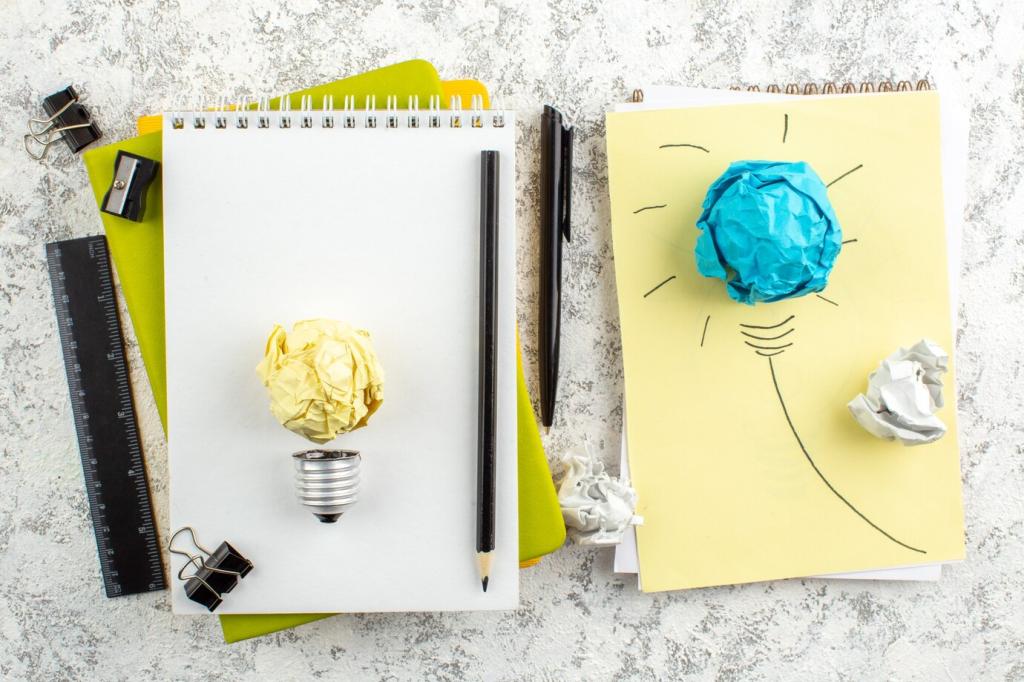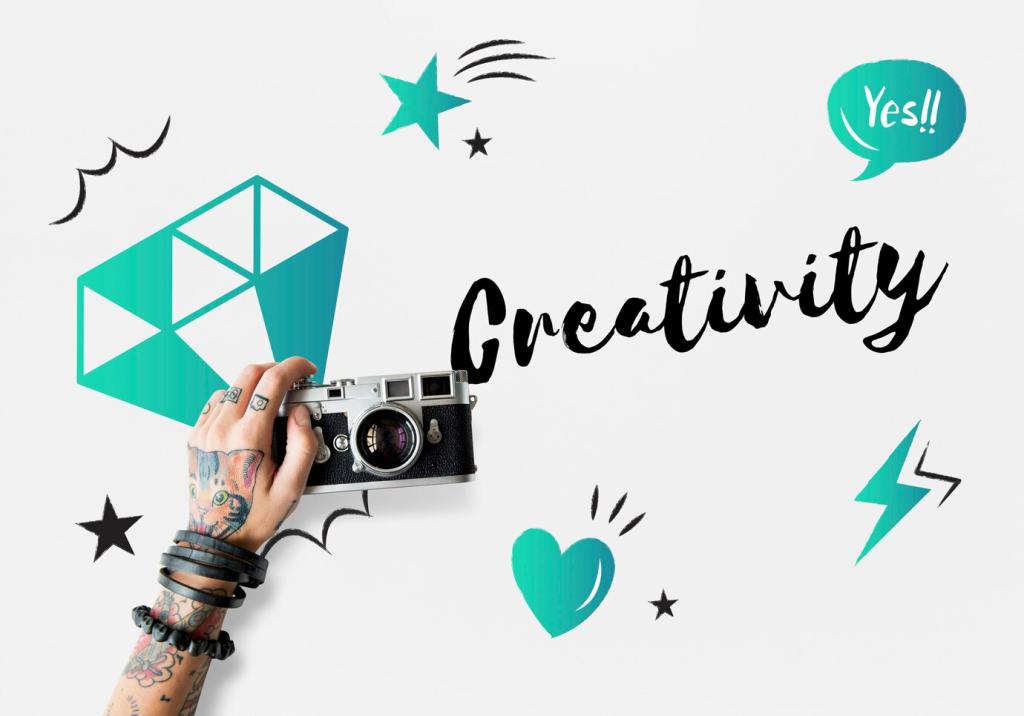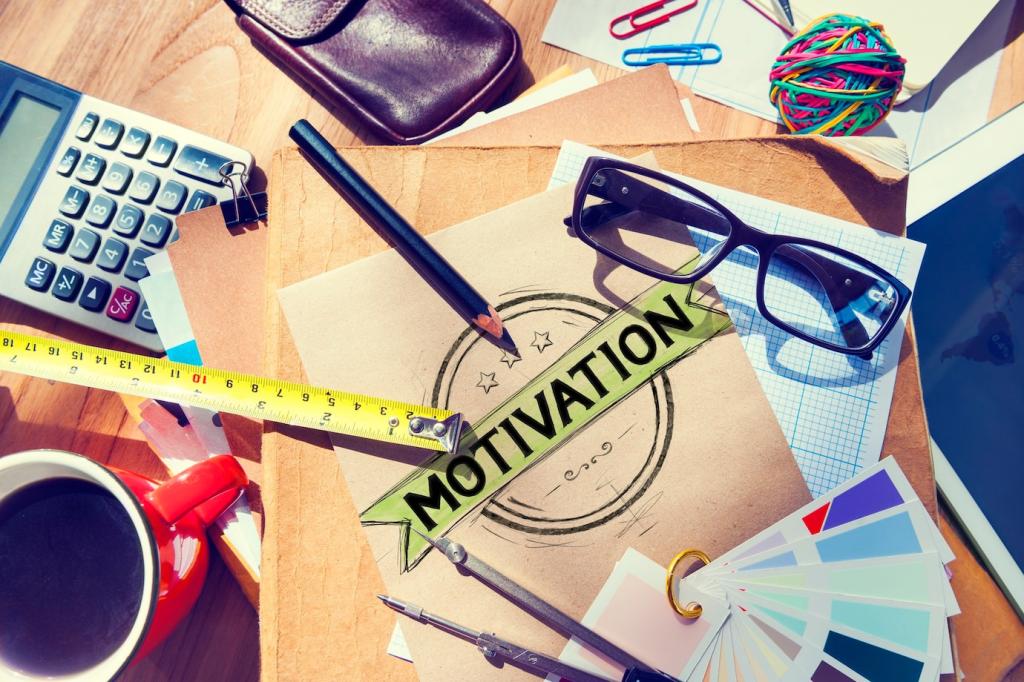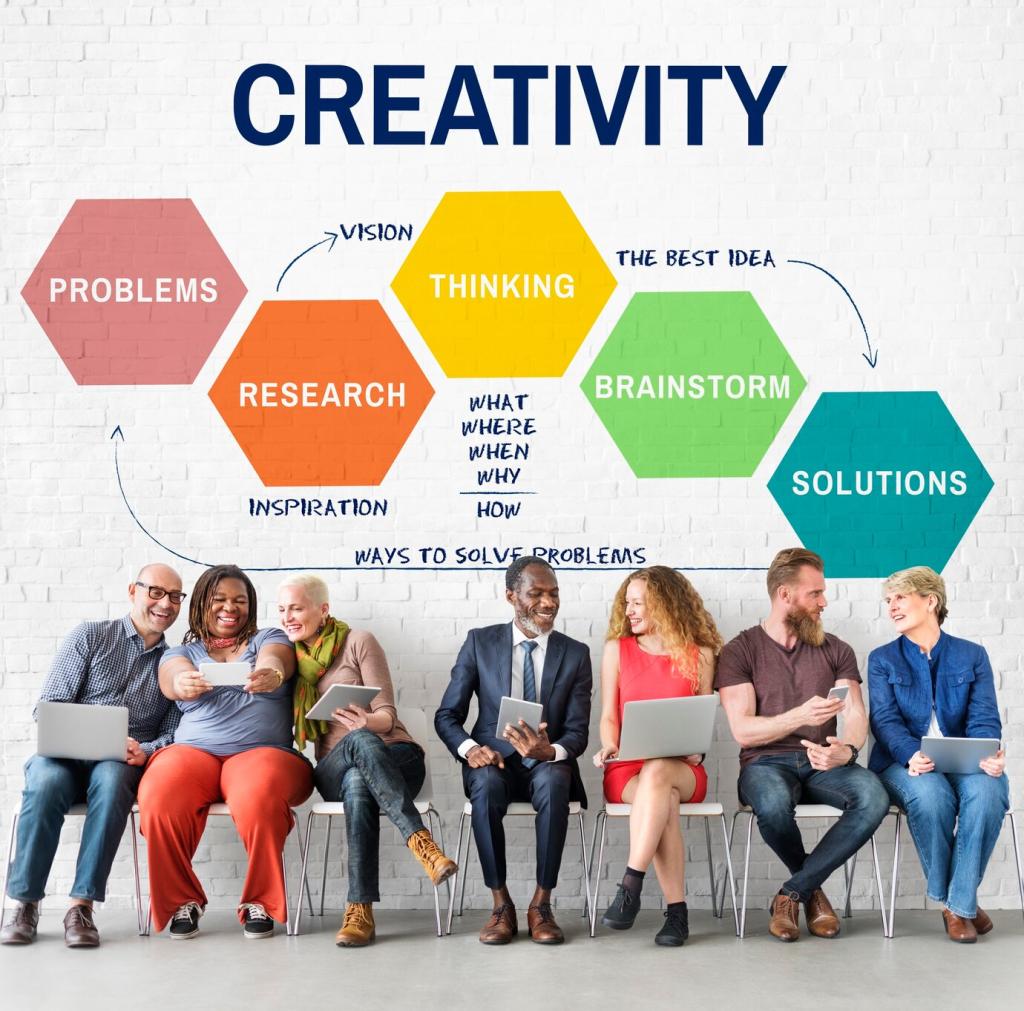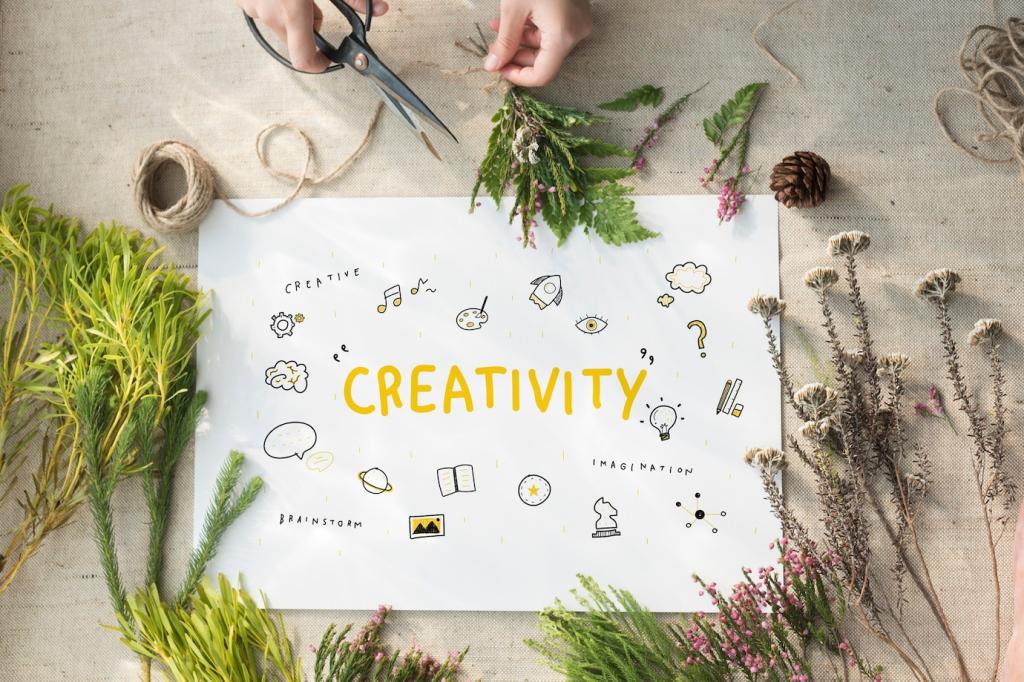Compassionate Self-Talk for Sustainable Creativity
Catch a critical line—“This is terrible”—and reframe it—“This is a first draft finding its shape.” Speak it aloud while breathing slowly. One designer in Pune said this shift turned dread into curiosity. Share your favorite compassionate reframe to encourage another creator today.
Compassionate Self-Talk for Sustainable Creativity
After each session, list five kind observations about your process, not just outcomes: patience, persistence, playful risk, attentive edits, or rest. This record becomes evidence against self-doubt. If you try it for three days, tell us how your mood and output changed.
Compassionate Self-Talk for Sustainable Creativity
Trade early drafts in a small, respectful group with mindful guidelines: ask before offering critique, lead with curiosity, and pause to breathe when emotions spike. A poet told us these agreements revived her joy. Invite a friend and report how safety influenced your boldness.


